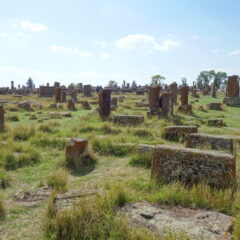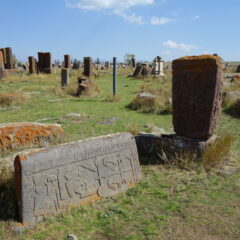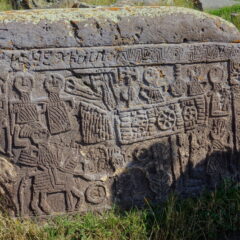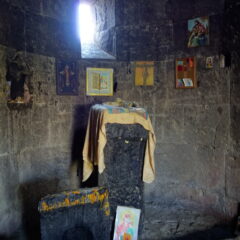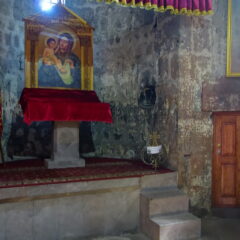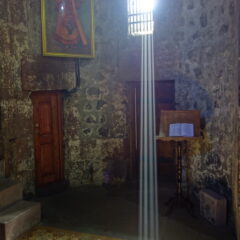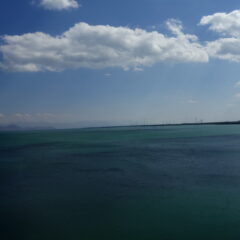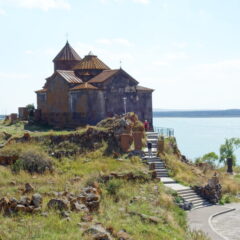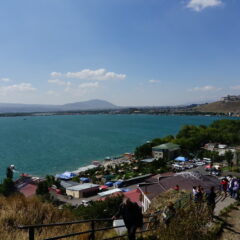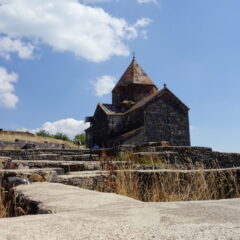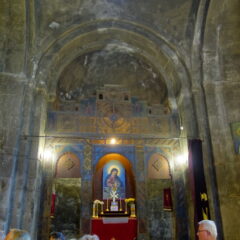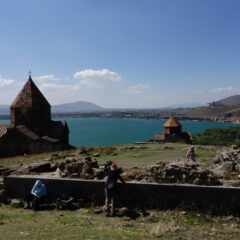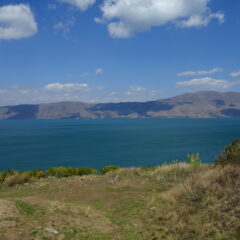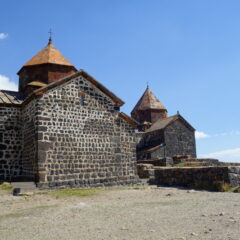We were leaving Yerevan behind today, with the next destination being the area around Lake Sevan.
A drive of just less than 100km got us to Noratus, where – after a toilet break and an impromptu (temporary) swap of spindles – a visit of the local cemetery was on our schedule. The cemetery is famous for its medieval khachkars (cross stones), with the oldest dating back to the tenth century. The khachkars typically show scenes of village and farm life, as well as major events (weddings) – and as such provide some insight into peoples’ lives back in the days.
We continued for a bonus-monastery (i.e. one that was not included in the itinerary and that our tour guide added as a bonus) – Hayravank Monastery (Հայրավանք). We were now right at the shores of Lake Sevan, with the monastery sitting on a rise, overlooking the lake. We had a look around this mediaval monastery (completed between the ninth and twelfth century) and also used some time, to take in the views.
More views were ahead of as at Sevanavank (Սևանավանք), a monastery – going back to the ninth century – sitting on a hill on top of a small peninsula (this used to be an island, but with water level dropping due to draining, the island had eventually become a peninsula). We spent some time exploring the churches (including a tour and explanations of course) – to then enjoy the views once more.

